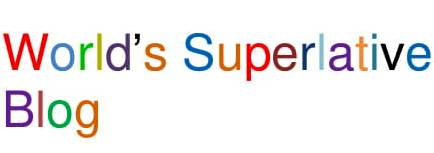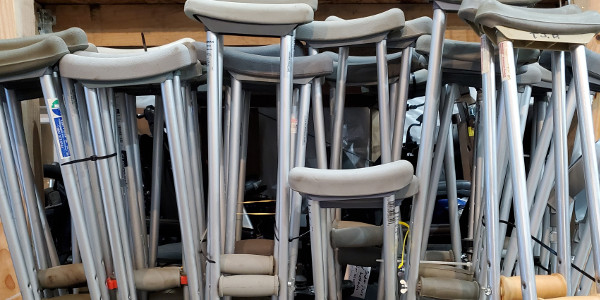Natural healing
We all know the story about the guy who scatters pennies wherever he goes. Someone asks him what he’s doing. “Keeping the tigers away,” he says. “But there aren’t any tigers around here!” they protest. “Of course not,” the guy says triumphantly, “it works!”
Even though we roll our eyes at the silly man, all too often we act the same way. When we were kids, everyone seemed to have a great aunt who had lots of wonderful home remedies: Wrap boiled cabbage leaves around a sprained ankle, put a drop of peppermint oil on the forehead for a headache, eat garlic to cure a cold. And indeed, these simple, natural remedies worked–the ankle got better, and the headache and cold went away. These treatnents are so compelling that we sometimes carry them into adulthood. Then as parents we pass them on to the next generation, along with fond memories of Aunt Bea. But of course sprained ankles almost always heal and headaches and colds get better no matter what you do. Or don’t do. Maybe Aunt Bea was just scattering pennies.
On a trip to New Mexico some years ago we visited El Santuario de Chimayó, about 35 miles north of Santa Fe. Chimayó is the Lourdes of the southwest. But in keeping with the dry climate, the healing substance is dirt, not water. A hole in the chapel floor contains the holy dirt, which is replenished to the tune of more than 25 tons a year. When a visitor grabs a handful of dirt and rubs it over the affected body part, miraculous cures are said to result. In testimony to its power, there’s an impressive collection of crutches leaning against a railing on the chapel wall. Pretty compelling stuff—how can you argue with dozens of pairs of abandoned crutches? But as I looked at the evidence, something suddenly struck me: almost all the crutches looked nearly new, with fresh rubber pads and shiny aluminum tubing. Not my image of the crutches that old folks, crippled from youth, would throw down after the healing dirt kicked in. Thus, it occurred to me that maybe most of the Chimayo crutches’ owners had sprains or simple fractures that would have healed just about as well without the application of the consecrated soil.
During my first year of medical school, wedged in between lectures on oxidative phosphorylation and the mucopolysaccharidoses, we were given a tiny block of time to do something different. I elected to go to a small community hospital to hear from a real family doctor—not many of that species hung around the medical school. “Frankly,” he said at one point in his talk, “I sometimes wonder how many patients I’ve cured by going on vacation.” This was one of the most memorable—and wisest—things I heard in my entire medical education. This is the point: whether a patient, complaining of a sore throat, runny nose and muscle aches, went to the doctor for a prescription of antibiotics, or didn’t go to the doctor at all, the outcome would undoubtedly have been the same–antibiotics have simply no effect on a viral respiratory infection. But fortunately colds get better on their own.
(Now at this point I’d like to be clear that I’m certainly not against using drugs to treat disease—after all, I’ve spend a good chunk of my career developing new medicines, and know that when given appropriately they can be extremely useful, and even life-saving. It’s just that they should always be reserved for situations where the proven benefits clearly outweigh the risks.)
We spend billions of dollars on herbal remedies, megavitamins, and all sorts of other healing potions. The internet is teeming with breathless testimonials hawking miracle cures, very often from “all natural” products, and usually with a prominent “order now!” button at the bottom of the screen. These ads are very seductive, and the products they flog sound almost too good to be true. But, in fact, they probably work pretty darn well. About as well as scattering pennies.
We are blessed with bodies designed to heal themselves from a wide variety of assaults. Thus, maybe we shouldn’t put so much faith in cabbage leaves, holy dirt, or internet natural remedies. Perhaps simply letting nature take its course, without our meddling, is true “natural healing.”




I’m impressed that you can still spell oxidative phosphorylation and the mucopolysaccharidoses.
Ken, Your post reminded me of something from my early years.
My mother’s sister, Aunt Mary, used to perform a ritual called “ma look.” I don’t know how to spell it; in Italian, it is probably “malocchio,” the “evil eye.” Anyhow, we called it “ma look.” When family members had a headache because we had a rough day at school or because we watched the evening news, we would head upstairs to Aunt Mary’s and ask her to do the “ma look” for us.
Aunt Mary would fill up a bowl with water; pour some oil into a tablespoon; rub our foreheads; immerse her index finger into the tablespoon and deliver some oil into the bowl of water. These physical actions would be accompanied by a prayer which Aunt Mary recited in Italian.
The event lasted about five minutes. After it was done, Aunt Mary would give us a book of matches. We’d light a match and then drive it into the biggest clump of oil. I think we had five tries to neutralize the biggest clumps of oil. By burning the oil, we were negating the evil thing that caused our headache.
I remember these rituals- and Aunt Mary-with great fondess. It worked…and it was certainly more fun than taking an aspirin!
There seems to be a fine line between placebo effect and the way our thoughts and attitudes have a very real impact on our physical bodies. Or perhaps the two are the same, just said differently. Of course, as someone who believes in divine power of healing, I think there is sometimes a different explanation altogether. Was a sudden recovery happenstance or miracle? I’m okay not knowing all the answers right now. 🙂
Thanks so much, Hillary for your thoughtful comment! Note that I never used the phrase “placebo effect” in my post, nor did I mean to imply that it was operating in the examples I gave. I don’t think the placebo effect is relevant to my argument.
My main point is that the body was designed with an incredible power to heal itself in a wide variety of circumstances, without human intervention with potions, drugs, or whatever. Isn’t that design a powerful example of the “divine power of healing?” I don’t think that any recovery, sudden or otherwise, is merely “happenstance.”
That is so well said, Ken. I thoroughly enjoyed reading this post. And I agree that our bodies have the amazing power to heal. For that I am so grateful!